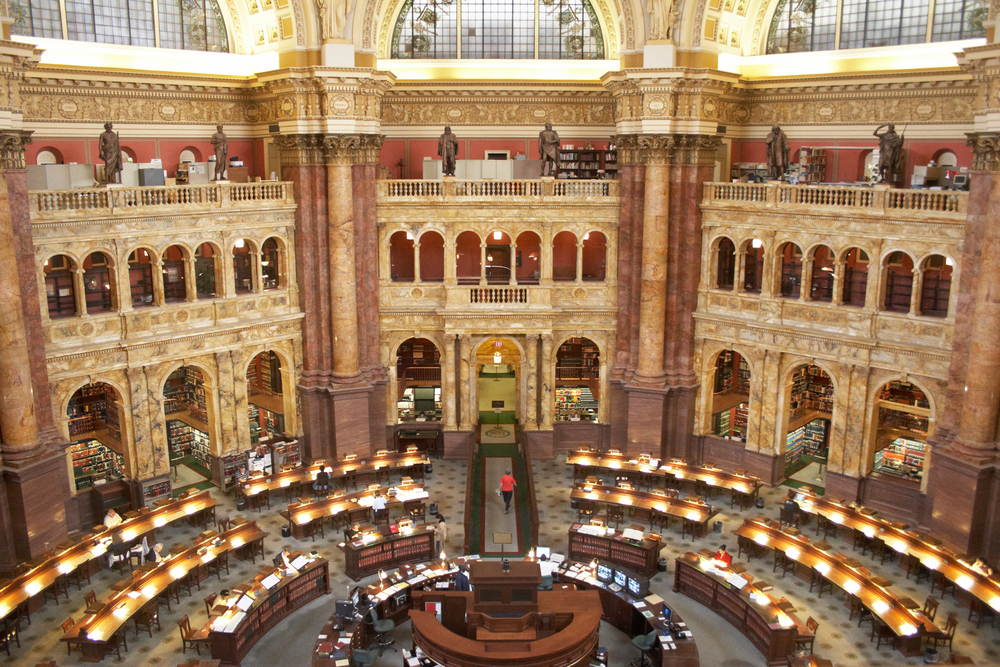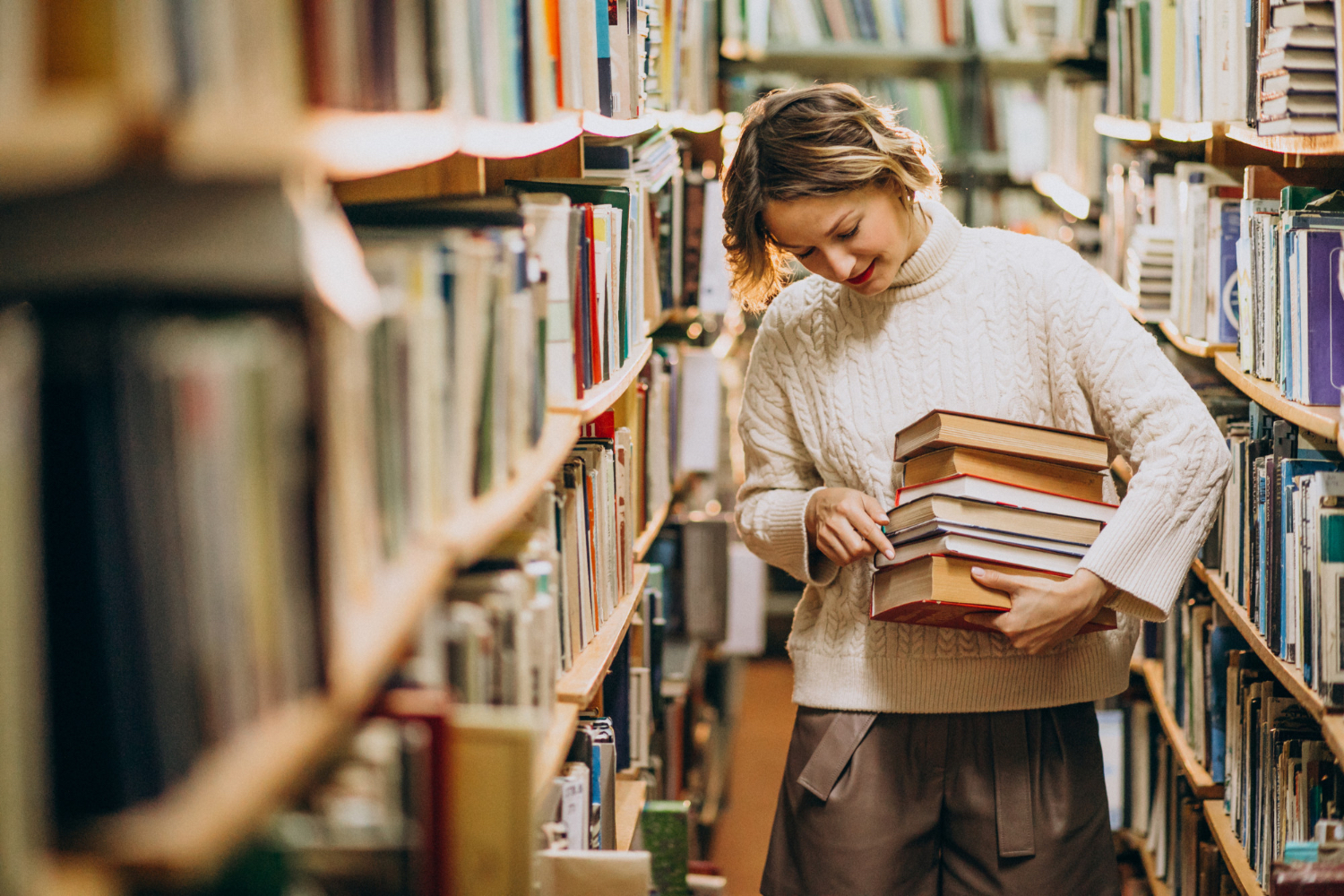Step into a world where history whispers through grand halls, where books hold the secrets of centuries, and where beauty intertwines with knowledge.
Washington, DC isn’t just a political powerhouse; it also harbors a collection of libraries that can rival the city’s iconic landmarks.
Join us as we embark on a journey to explore the hidden gems and unveil the most spellbinding libraries in Washington, DC. 📚
Library of Congress
Prepare to be awestruck as you enter the Library of Congress, a majestic castle that guards the literary treasures of humanity. Its opulent neoclassical architecture, adorned with ornate carvings and regal columns, transports visitors to a realm where knowledge reigns supreme.
The Main Reading Room, with its resplendent dome and celestial murals, beckons intellectuals and dreamers alike.
Lose yourself in the labyrinth of knowledge as you wander through the world’s largest library, spanning countless volumes, rare manuscripts, and cultural artifacts.
Its universal collections, spanning three buildings on Capitol Hill, feature more than 170 million items written in 470 different languages from all around the globe, including millions of books, photographs, newspapers, manuscripts, maps, films, sheet music, and sound recordings.
📌 Address: 101 Independence Avenue, Southeast Washington, DC 20540
🌐 Website: https://www.loc.gov/
☎️ Phone: (202) 707-5000
📧 Email: cdsinfo@mail.loc.gov

Georgetown Public Library
Nestled in the charming neighborhood of Georgetown, the Georgetown Public Library offers a delightful haven for book lovers and a thriving hub for the local community. This beloved institution, with its warm and inviting atmosphere, captures the essence of small-town charm right in the heart of DC.
The library’s design seamlessly blends modern elements with traditional touches, creating a space that feels both contemporary and timeless. The cozy reading nooks, bathed in natural light, beckon visitors to settle in and explore the vast collection of books and multimedia resources.
The library hosts a wide range of events and activities that cater to all ages and interests. From author readings and book clubs to educational workshops and children’s programs, there is always something exciting happening within its walls. These events foster a sense of togetherness, encouraging neighbors to connect, share ideas, and cultivate a love for learning.
📌 Address: 3260 R Street Northwest Washington, DC 20007
🌐 Website: https://www.dclibrary.org/georgetown
☎️ Phone: (202) 727-0232
📧 Email: georgetownlibrary@dc.gov
Folger Shakespeare Library
Behold, Shakespeare enthusiasts! In Capitol Hill lies the Folger Shakespeare Library, a sanctuary dedicated to the immortal wordsmith.
Step into Elizabethan England as you enter the library’s Tudor-style façade, surrounded by lush gardens reminiscent of the Bard’s era. Immerse yourself in the world’s most extensive Shakespearean collection, holding cherished editions, priceless manuscripts, and theatrical memorabilia. It was opened in 1932 by founders Henry and Emily Folger, and is still actively working to enhance its collection with new materials.
The library currently has approximately 260,000 printed books, 60,000 manuscripts, 90,000 prints, drawings, photographs, paintings, and other works of art, as well as films, recordings, playbills, and stage costumes.
In fact, the Folger is more than just a library; it also offers its audience a wide range of cultural and art events, including theater, music performances, literary readings, exhibitions, lectures, podcasts, and programs for families.
📌 Address: 201 East Capitol Street, Southeast Washington, DC 20003
🌐 Website: https://www.folger.edu/
☎️ Phone: (202) 544-4600
📧 Email: info@folger.edu
Martin Luther King Jr. Memorial Library
The Martin Luther King Jr. Memorial Library stands tall, embodying the spirit of knowledge and community empowerment. Recently revitalized, it combines contemporary design with a tribute to Dr. King’s legacy.
Marvel at its captivating glass exterior, a testament to modern architectural brilliance, reflecting the city’s vibrant energy.
Step inside to discover cutting-edge technology, inviting reading nooks, and an array of resources that foster learning, creativity, and inclusivity.
It is home to part of the special collections kept at the District’s library system, including books, maps, census records, newspaper archives. You can find more than a million photographs from the Washington Star newspaper, as well as theatrical video collections from the Washington Area Performing Arts Video Archive.
📌 Address: 901 G Street Northwest Washington, DC 20001
🌐 Website: https://www.dclibrary.org/mlk
☎️ Phone:(202) 727-0321
📧 Email: firstfloormlk.dcpl@dc.gov
DC presents a treasure trove of stunning libraries that blend architectural splendor with intellectual treasures. From the grandeur of the Library of Congress to the charm of the Folger Shakespeare Library, these institutions invite visitors to immerse themselves in a world of knowledge and beauty.
Whether you are a history aficionado, a literature enthusiast, or simply appreciate architectural marvels, these enchanting libraries are sure to captivate your senses and ignite your passion for learning. 🤩

